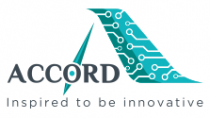IEEE Computer Society Grades its 2018 Technology Predictions: Scores a B
LOS ALAMITOS, Calif., Nov. 27, 2018 /PRNewswire/ -- In December 2017, the IEEE Computer Society (IEEE-CS) released its technology adoption predictions for 2018, with a focus on deep learning, digital currencies, blockchain, industrial IoT, robotics, assisted transportation, and others on the front line of computing breakthroughs. Today, the IEEE-CS graded its 2018 predictions while providing insights on the advancements of the trends over the past year and analyses of their future potential. The overall score for the 2018 technology predictions is B.
"The past year has seen mature deployment of industrial IoT, continued adoption of deep learning, and expanded uses of blockchain technologies," said Dejan Milojicic, IEEE-CS past president (2014). "We have seen continuation of innovative technologies from last year that are setting the stage for a promising 2019."
Following are the IEEE-CS predictions, grades,
and analyses:
1.
Deep learning: A-
Undoubtedly, deep learning (DL) made
huge strides toward broad adoption
during the past year. The only
reason it did not get an A is the
extensive nature of DL that leads
it to be used for everything and
anything. We are confident that
this will be filtered out next year
and DL will become ubiquitous in
the very near future.
2.
Digital currencies: C-
The promise of the wide adoption of
digital currencies has not seen
fruition, primarily due to the
volatility of the cryptocurrency
markets.
3.
Blockchain: A
There are extended opportunities for
use of blockchain technologies
independent of its initially
popular use for digital currencies.
This resulted in a high mark for
our predictions.
4.
Industrial IoT: A+
Industrial IoT scored a B+ last year
due to insufficient adoption. Its
adoption surpassed expectations
this year, and was therefore the
highest rated. It was ultimately
the usefulness of the approach that
swayed us in its ranking. This is
also the technology where there is
the most agreement among those who
made the prediction (standard
deviation was zero).
5.
Robotics: B+
Robotics continued to have increased
adoption, fueled by the adoption of
accelerators and DL. However, it
still has not reached its full
potential, even though it continues
to have a bright future.
6.
Assisted transportation: A-
Adoption of assisted transportation
(or fully autonomous vehicles) has
continued at a steady pace. In
addition, electrical vehicles in
constrained environments (airports,
factories, etc.) have increasing
autonomous deployment.
7. Augmented reality and virtual
reality (AR/VR): B-
We expected a higher degree of AR
and VR, beyond limited gadgets. It
appears that its time has not quite
come. We were too early in
predicting its adoption.
8. Ethics, laws, and policies for
privacy, security, and liability:
C+
Even though the use of AI is
emerging and ethics have been
addressed sporadically, more
general approaches to policies,
privacy, security, and liability
have not yet been addressed at the
required scope.
9.
Accelerators and 3D: A
AI and DL have forcefully driven the
economy of accelerator use for a
broad range of applications. This
is true for traditional companies
as well as a plethora of startups
focusing on new accelerator
hardware and software.
10.
Cybersecurity and AI: C
The time for cybersecurity to
benefit from AI (and vice versa)
has not quite come. We are still
confident that the two technologies
will mutually benefit each other,
but our prognosis was overly
optimistic.
The process followed for ranking the predictions was simple and straightforward. The authors who originally made the predictions evaluated their predictions individually. Averages and standard deviations were used as a basis for the discussion, which eventually resulted in the final rating.
Authors' overall rating for all 2018 predictions resulted in a score of B, a close comparison to the past 2017 technology predictions score of A-.
Predictions and the scorecard were delivered by Fred Douglis (Perspecta Labs), Paolo Faraboschi (Hewlett Packard Labs), Eitan Frachtenberg (data scientist), Erik DeBenedictis (Sandia National Labs), Phil Laplante (Penn State), and Dejan Milojicic (Hewlett Packard Labs).
IEEE-CS will announce its 2019 Technology Predictions in December 2018. The complete list will be available in the IEEE-CS Press Room and on the myComputer.org mobile app.
About IEEE Computer Society
The IEEE Computer Society is the world's home for computer science, engineering, and technology. A global leader in providing access to computer science research, analysis, and information, the IEEE Computer Society offers a comprehensive array of unmatched products, services, and opportunities for individuals at all stages of their professional career. Known as the premier organization that empowers the people who drive technology, its unparalleled resources include membership, international conferences, peer-reviewed publications, a unique digital library, standards, and training programs. Visit www.computer.org for more information.
View original content to download multimedia:http://www.prnewswire.com/news-releases/ieee-computer-society-grades-its-2018-technology-predictions-scores-a-b-300755651.html
SOURCE IEEE Computer Society




